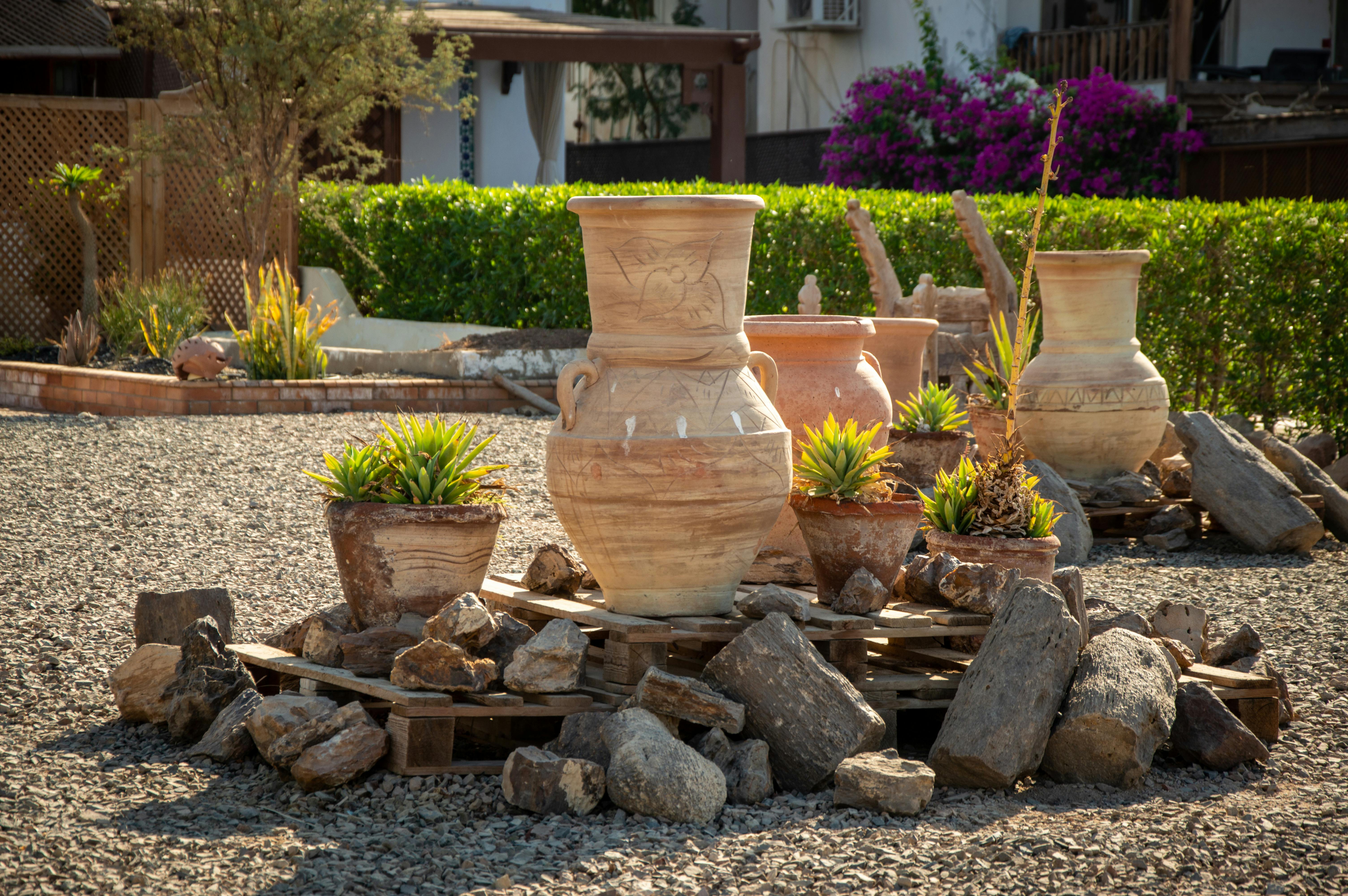If you enjoy the simplicity and convenience of one-pot meals, you may have wondered about the best cookware options to enhance your culinary adventures. With a myriad of choices available in the market, it can be overwhelming to decide which type of cookware is most suitable for achieving delicious results. From the trusty cast iron to the sleek stainless steel and everything in between, this article explores the different cookware options that can help take your one-pot meals to the next level. So, grab your apron and let’s dive into the world of cookware!

Cast Iron Cookware
Benefits of Cast Iron Cookware
Cast iron cookware is a staple in many kitchens due to its numerous benefits. Firstly, cast iron is incredibly durable and can last for generations when properly cared for. Unlike other materials, cast iron can withstand high temperatures and is excellent for searing, frying, and baking. It also retains heat well, which means your food will stay warm even after it’s taken off the heat source. Another benefit is the non-stick properties of cast iron. When properly seasoned, it creates a natural non-stick surface, making it easy to cook with and clean up afterwards. Additionally, using cast iron can even contribute to your iron intake, as small amounts of iron leach into the food during cooking.
Tips for Using Cast Iron Cookware
To make the most out of your cast iron cookware, here are some tips to keep in mind. First, be sure to season your cast iron before using it. This involves applying a thin layer of oil and baking it in the oven. Seasoning helps create a natural non-stick surface and prevents rusting. It’s also important to gently hand wash your cast iron cookware with warm water and a mild soap. Avoid using abrasive cleaners or scrubbing pads that can damage the seasoned surface. After cleaning, thoroughly dry the cookware to prevent rust. Additionally, it’s best to avoid cooking highly acidic foods, such as tomatoes or citrus, in cast iron as it can compromise the seasoning.
Recommended Cast Iron Cookware Products
When it comes to choosing cast iron cookware, there are plenty of options to consider. Some popular and highly recommended brands include Lodge, Le Creuset, and Staub. Lodge, a well-known and affordable brand, offers a wide range of cast iron skillets, griddles, and Dutch ovens. Le Creuset and Staub are both premium brands known for their exceptional quality and beautiful enameled cast iron cookware. Whether you’re looking for a basic skillet or a versatile Dutch oven, these brands offer a variety of sizes and colors to suit your needs and preferences.
Stainless Steel Cookware
Benefits of Stainless Steel Cookware
Stainless steel cookware is another popular choice for home cooks. One of the main benefits of stainless steel is its excellent heat conductivity, allowing for even cooking and preventing hot spots. It is also compatible with all stovetops, including induction. Unlike nonstick cookware, stainless steel is incredibly durable and resistant to scratches and chips. It is also non-reactive, which means it won’t impart any unwanted flavors or chemicals into your food. Additionally, stainless steel cookware is dishwasher-safe, making cleanup a breeze.
Tips for Using Stainless Steel Cookware
To ensure optimal performance and longevity of your stainless steel cookware, there are a few tips to keep in mind. Firstly, preheat the pan before adding any ingredients to prevent sticking. While stainless steel is not naturally non-stick, preheating can help create a temporary non-stick surface. It’s also important to use oil or cooking spray when cooking with stainless steel to further prevent sticking. Avoid using high heat, as stainless steel can retain heat well, and using excessive heat may lead to food sticking or burning. Lastly, when cleaning stainless steel cookware, avoid using abrasive cleaners or scrubbing pads, as they can scratch the surface. Instead, use gentle dish soap and a soft sponge or cloth.
Recommended Stainless Steel Cookware Products
If you’re in the market for stainless steel cookware, there are several reputable brands to consider. All-Clad is often regarded as the gold standard for stainless steel cookware, known for its superior quality and performance. Their tri-ply construction ensures even heat distribution, and their cookware is built to last. Calphalon is another popular brand offering a wide range of stainless steel cookware options, from individual pans to complete sets. They are known for their durable construction and comfortable handles. Cuisinart is a more affordable option that still provides decent quality and performance for everyday cooking needs.
Nonstick Cookware
Benefits of Nonstick Cookware
Nonstick cookware is beloved by many for its ease of use and effortless cleanup. The main benefit of nonstick cookware is its ability to prevent food from sticking, making it ideal for cooking delicate items such as eggs or pancakes. It requires minimal oil or butter, making it a healthier option for those looking to reduce fat consumption. Nonstick coatings also make cleanup a breeze, as food particles slide right off the surface with little to no scrubbing required. Additionally, nonstick cookware is generally lightweight and easy to handle, making it perfect for everyday cooking.
Tips for Using Nonstick Cookware
To ensure the longevity of your nonstick cookware and maintain its nonstick properties, there are a few tips to follow. Firstly, avoid using metal utensils that can scratch or damage the nonstick coating. Opt for wooden, plastic, or silicone utensils instead. It’s also important to use low to medium heat when cooking with nonstick cookware, as high heat can degrade the nonstick coating over time. Avoid using nonstick cookware under the broiler or in the oven at very high temperatures, as it may cause warping or damage. Lastly, always hand wash nonstick cookware with warm, soapy water and a gentle sponge or cloth. Dishwashers and abrasive cleaning tools can shorten the lifespan of the nonstick coating.
Recommended Nonstick Cookware Products
When it comes to nonstick cookware, there are many options available at various price points. T-fal is a popular and affordable brand that offers a wide range of nonstick cookware options, from individual pans to complete sets. Their cookware is known for its durability and effective nonstick properties. Calphalon is also well-regarded for their nonstick cookware, offering different lines to suit various budgets and preferences. Their nonstick coating is reinforced with hard-anodized aluminum for even heat distribution and enhanced durability. If you’re looking for a premium option, the Swiss Diamond brand is known for its high-quality nonstick cookware, featuring a diamond-infused coating for superior nonstick performance and longevity.
Copper Cookware
Benefits of Copper Cookware
Copper cookware has been used by professional chefs for centuries due to its exceptional heat conductivity. One of the main benefits of copper cookware is its ability to heat up quickly and distribute heat evenly, resulting in precise cooking control. Copper cookware is responsive to temperature changes, making it perfect for delicate sauces or precise cooking techniques. Additionally, copper cookware is incredibly beautiful and adds a touch of elegance to any kitchen. It is often appreciated for its aesthetic appeal and ability to be displayed as a decorative element.
Tips for Using Copper Cookware
To ensure proper care and maintenance of your copper cookware, here are some tips to follow. Firstly, hand wash your copper cookware with warm water and a mild dish soap. Avoid using abrasive cleaners or scrubbing pads that can scratch the copper surface. It’s also important to dry your copper cookware thoroughly after washing to prevent tarnishing. Copper can naturally develop a patina over time, which some people find desirable. However, if you prefer to maintain the original shiny appearance, use a copper cleaner or a mixture of lemon juice and salt to restore its luster. Lastly, avoid cooking highly acidic foods in copper cookware for prolonged periods, as it can react with the copper and create a metallic taste.
Recommended Copper Cookware Products
When it comes to copper cookware, there are various options available, ranging from pure copper to copper-clad cookware. Mauviel is a renowned brand known for its high-quality copper cookware. They offer a wide range of options, including copper pots, pans, and specialized pieces for specific cooking techniques. Another highly recommended brand is Falk Culinair, which produces copper cookware with a stainless steel lining for improved durability and ease of maintenance. Their cookware is handcrafted and designed for professional use, ensuring exceptional performance. If you’re looking for a more budget-friendly option, Matfer Bourgeat offers affordable copper cookware that still delivers good heat conductivity and performance.

Enamel-Coated Cookware
Benefits of Enamel-Coated Cookware
Enamel-coated cookware, also known as porcelain-coated cookware, combines the benefits of both metal and ceramic cookware. The enamel coating provides a smooth, non-reactive surface that doesn’t leach any metallic flavors into the food. It is also highly resistant to staining, making it great for cooking acidic foods. Enamel-coated cookware is versatile and can be used on any stovetop, including induction, as well as in the oven. It is also relatively easy to clean, as the enamel coating prevents food from sticking to the surface.
Tips for Using Enamel-Coated Cookware
To get the most out of your enamel-coated cookware, consider these tips. Firstly, avoid using metal utensils that can scratch or chip the enamel coating. Opt for wooden, plastic, or silicone utensils instead. It’s also important to avoid using excessive heat with enamel-coated cookware, as it can lead to discoloration or damage to the enamel. Use low to medium heat whenever possible. When cleaning, avoid abrasive cleaners or scrubbing pads that can scratch the enamel surface. Instead, use a gentle dish soap and a soft sponge or cloth. If stains or discoloration occur, a mixture of baking soda and water can help remove them.
Recommended Enamel-Coated Cookware Products
Le Creuset is a leading brand in enamel-coated cookware and is often highly recommended for its quality and performance. They offer a wide range of cookware options in various colors, allowing you to find the perfect piece for your kitchen. Le Creuset’s cast iron enamel-coated Dutch ovens are particularly popular for their versatility and durability. Another excellent brand is Staub, known for its enameled cast iron cookware that offers exceptional heat retention and distribution. Staub’s vibrant colors and unique designs make their cookware stand out in any kitchen. For more budget-friendly options, Lodge and Cuisinart also offer enamel-coated cookware that provides reliable performance at a more affordable price point.
Clay Cookware
Benefits of Clay Cookware
Clay cookware, also known as earthenware, has been used for centuries in various cultures around the world. One of the significant benefits of clay cookware is its ability to retain moisture while cooking. This makes it ideal for slow-cooking and braising, as the trapped moisture ensures tender and flavorful results. Clay cookware also distributes heat evenly, preventing hot spots and allowing for gentle, uniform cooking. Additionally, cooking with clay imparts a unique, earthy flavor to the food, enhancing the overall taste experience.
Tips for Using Clay Cookware
To ensure optimal performance and longevity of your clay cookware, here are some tips to keep in mind. Before the first use, it’s essential to season your clay cookware by soaking it in water for a few hours. This helps prevent cracking and improves its heat retention properties. Always start cooking with clay cookware on low heat to allow it to gradually heat up and avoid sudden temperature changes. Pre-soaking the clay cookware for 15-30 minutes before cooking can help prevent cracking and improve its heat resistance. Additionally, avoid exposing clay cookware to extreme temperature changes to prevent cracking. Hand wash clay cookware with mild detergent and warm water, and allow it to dry completely before storing.
Recommended Clay Cookware Products
When it comes to choosing clay cookware, consider the following recommendations. Romertopf is a well-known brand that specializes in clay cookware for baking, roasting, and slow-cooking. Their products are made from natural clay and are known for their excellent heat retention and moisture-locking properties. Another highly recommended brand is Emile Henry, which offers a wide range of clay cookware, including tagines, casseroles, and baking dishes. Their products are made in France and are known for their superior craftsmanship and performance. If you prefer a more affordable option, Reston Lloyd offers budget-friendly clay cookware that still delivers good cooking results and durability.

Glass Cookware
Benefits of Glass Cookware
Glass cookware offers several benefits that make it an attractive choice for many cooks. Firstly, glass is non-reactive, which means it won’t interact with acidic or alkaline foods and alter their flavors. This makes glass cookware perfect for preparing dishes that require precise flavors. Glass also allows for even heat distribution, allowing your food to cook uniformly. Additionally, glass cookware is transparent, which allows you to monitor the cooking process without having to lift the lid or remove the dish from the oven. Glass cookware is versatile and can be used in the oven, microwave, and refrigerator, providing convenience and flexibility in the kitchen.
Tips for Using Glass Cookware
To ensure the best results and longevity of your glass cookware, here are a few tips to consider. It’s important to avoid sudden temperature changes with glass cookware, as it can cause the glass to shatter. Allow the cookware to cool slightly before placing it in the refrigerator or running it under cold water. Be cautious when using glass cookware on the stovetop, as direct heat can cause thermal shock and lead to breakage. When cleaning, avoid using abrasive cleaners or scrubbing pads that can scratch the glass surface. Instead, use a gentle dish soap and a soft sponge or cloth. Always handle glass cookware with care to prevent accidental drops or impacts.
Recommended Glass Cookware Products
Pyrex is a well-known brand that specializes in glass cookware, offering a variety of bakeware, casserole dishes, and mixing bowls. Their glass cookware is made from durable, high-quality materials and is known for its even heat distribution and excellent baking results. Anchor Hocking is another reputable brand that provides a range of glass cookware options, including baking dishes and food storage containers. Their glass cookware is known for its durability and versatility. If you’re looking for more stylish and aesthetically pleasing glass cookware, Emile Henry offers beautiful glass baking dishes and roasting dishes that can go from the oven to the table.
Ceramic Cookware
Benefits of Ceramic Cookware
Ceramic cookware has gained popularity in recent years due to its health and environmental benefits. One of the main benefits of ceramic cookware is its non-reactive nature, meaning it won’t leach any chemicals or flavors into your food. Ceramic cookware is typically made from natural materials and free from harmful substances such as PFOA and PTFE. Another advantage of ceramic cookware is its excellent heat retention and distribution. It allows for even cooking and prevents hot spots, resulting in better cooking results. Ceramic cookware is also easy to clean, as food doesn’t stick to the smooth surface.
Tips for Using Ceramic Cookware
To get the most out of your ceramic cookware, here are some tips to follow. Preheat your ceramic cookware before adding any ingredients to ensure even cooking. It’s also important to be mindful of the temperature, as ceramic cookware can retain heat well. Avoid using high heat, as it can cause the food to burn or stick to the surface. When cleaning, avoid using abrasive cleaners or scrubbing pads that can damage the ceramic finish. Instead, use a gentle dish soap and a soft sponge or cloth. If food does stick to the surface, soaking the cookware in warm, soapy water can help loosen the residue.
Recommended Ceramic Cookware Products
GreenPan is a popular and reputable brand known for its ceramic cookware. Their cookware is free from harmful chemicals and utilizes a ceramic nonstick coating for easy cooking and cleaning. GreenPan offers a variety of cookware options, from individual pans to full sets, catering to different cooking needs. Another recommended brand is Xtrema, which specializes in 100% ceramic cookware. Their cookware is made from pure ceramic and can withstand high temperatures, making it perfect for stovetop and oven use. If you’re looking for a more affordable option, Cuisinart offers ceramic cookware that delivers good performance and durability at a more budget-friendly price point.
Pressure Cookers
Benefits of Pressure Cookers
Pressure cookers have experienced a resurgence in popularity due to their ability to cook food quickly and retain flavors. One of the main benefits of pressure cookers is their ability to significantly reduce cooking time. By cooking food under high pressure, pressure cookers can dramatically cut down on cooking times compared to traditional methods. This is especially useful for slow-cooking dishes that typically require several hours. Pressure cookers also retain more nutrients in the food since less water is needed for cooking. Additionally, pressure cookers are versatile and can be used for a wide range of cooking techniques, such as steaming, braising, and even canning.
Tips for Using Pressure Cookers
To ensure safe and efficient use of your pressure cooker, consider the following tips. Always read and follow the manufacturer’s instructions before using your pressure cooker, as different models may have specific guidelines. Use the appropriate amount of liquid for each recipe to prevent the cooker from running dry. It’s also important to avoid overfilling the pressure cooker, as this can lead to food clogging the steam release valve. Be cautious when releasing the pressure, as the steam can be extremely hot. To prevent accidents, always use a long-handled utensil to release the steam or use the natural release method. Lastly, regular maintenance, such as cleaning the rubber gasket and checking the pressure valve, is essential to keep your pressure cooker in optimal condition.
Recommended Pressure Cookers
Instant Pot has become synonymous with pressure cookers and is highly recommended for its versatility and convenience. Instant Pot offers a variety of models with different features, including pressure cooking, slow cooking, and sautéing. Their pressure cookers are known for their safety features and ease of use. Another recommended brand is Fissler, known for their high-quality and durable pressure cookers. Fissler pressure cookers feature innovative designs and precise pressure control for optimal cooking results. If you’re looking for a more budget-friendly option, Presto offers affordable pressure cookers that still deliver good performance and reliability.
Dutch Ovens
Benefits of Dutch Ovens
Dutch ovens are versatile cookware that can be used for a wide range of cooking methods, making them a popular choice among home cooks. One of the main benefits of Dutch ovens is their excellent heat retention and distribution. They are typically made from heavy-duty cast iron or enameled cast iron, which allows for even cooking and prevents hot spots. Dutch ovens are also incredibly versatile and can be used for various cooking techniques, such as braising, stewing, baking, and even frying. They are perfect for slow-cooking dishes that require long, gentle heat to develop rich flavors. Additionally, Dutch ovens are often considered timeless and can be passed down through generations.
Tips for Using Dutch Ovens
To get the most out of your Dutch oven, consider these tips. Preheat your Dutch oven before adding any ingredients, especially if you’re searing meat or sautéing vegetables. This ensures even heat distribution and prevents food from sticking to the surface. Avoid using excessive heat, as Dutch ovens retain heat well and high temperatures can lead to burning or sticking. When cleaning, avoid using abrasive cleaners or scrubbing pads that can damage the seasoning or enamel coating. Instead, use warm water and a mild dish soap. If food is stuck to the surface, soaking the Dutch oven in warm, soapy water can help loosen the residue.
Recommended Dutch Ovens
When it comes to Dutch ovens, there are several reputable brands to consider. Le Creuset and Staub are widely regarded as top choices for enameled cast iron Dutch ovens. Both brands offer a variety of sizes and colors to suit different preferences. Le Creuset is known for its vibrant colors and iconic design, while Staub is appreciated for its matte finish and superior heat retention. Another highly recommended brand is Lodge, which specializes in cast iron Dutch ovens at more affordable price points. Lodge Dutch ovens are durable and well-constructed, providing excellent performance for both indoor and outdoor cooking.


